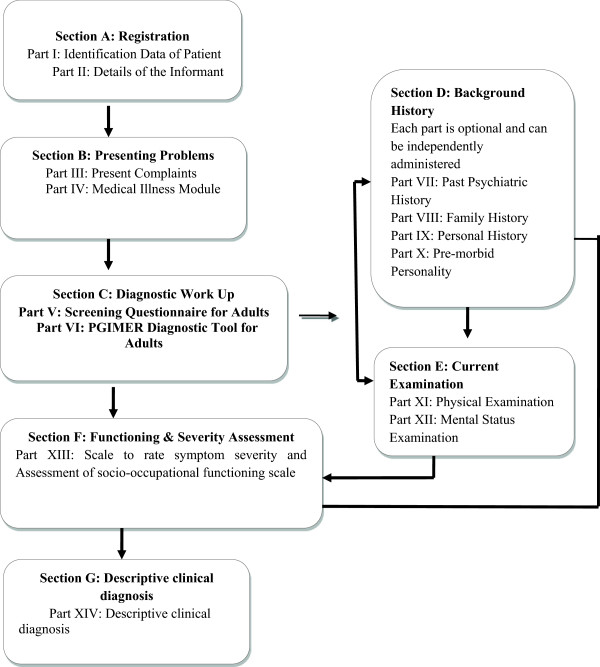Figure 1.

Flow of the diagnostic tool. The diagnostic exercise follows a stepwise approach to reach the final descriptive clinical diagnosis. First, the identification details, socio-demographic profile, presenting complaints and precipitating events are elicited and recorded (Sections A and B in the figure). This is followed by the ‘core’ diagnostic assessment (Section C in the figure), which includes initial screening for all disorders, followed by detailed criteria-based questions for specific disorders endorsed positive on screening. This ‘core’ diagnostic assessment is sufficient to generate a psychiatric diagnosis, but can be further supplemented by ‘additional’ sections on past, family, personal, developmental, medical and treatment history details (Section D), and physical and mental status examinations (Section E), whenever required. In addition, separate scales have been developed to assess symptom severity (on a five-point scale) and socio-occupational functioning (on a visual analogue scale) (Section F). At the end of the diagnpostic work up, a descriptive clinical diagnosis is generated (Section G).
